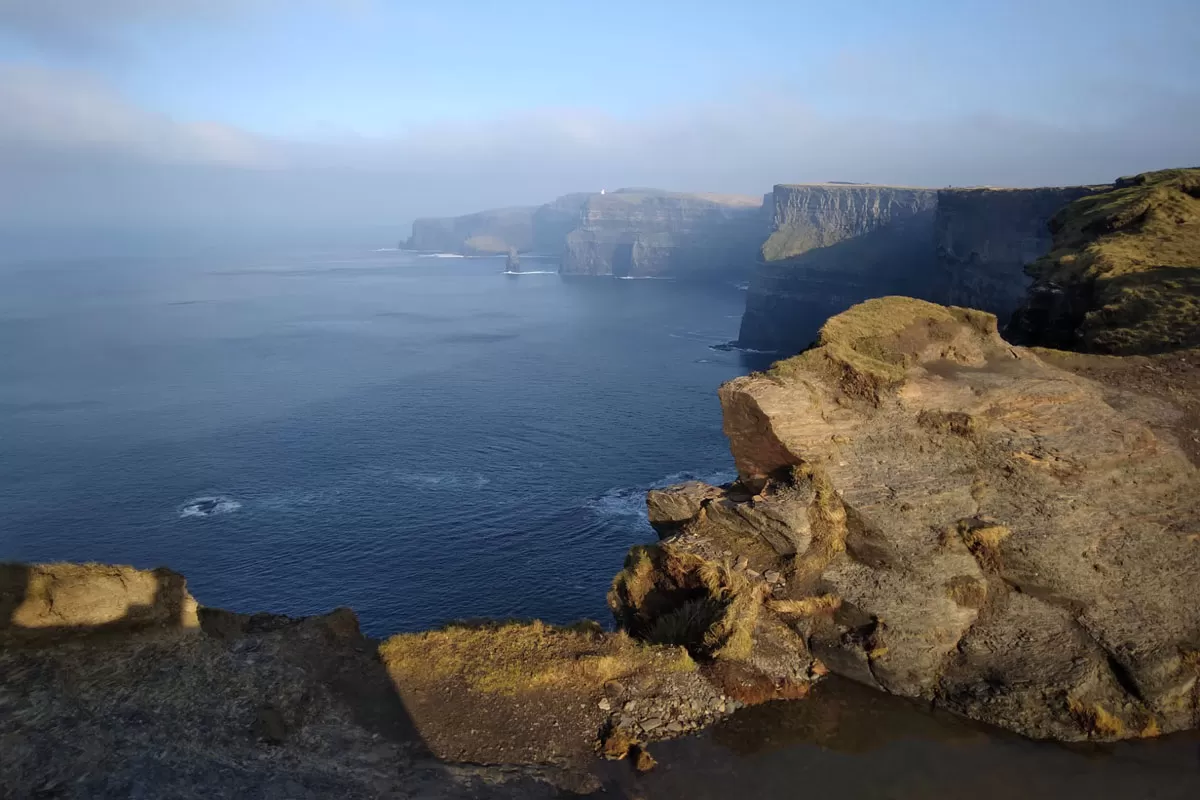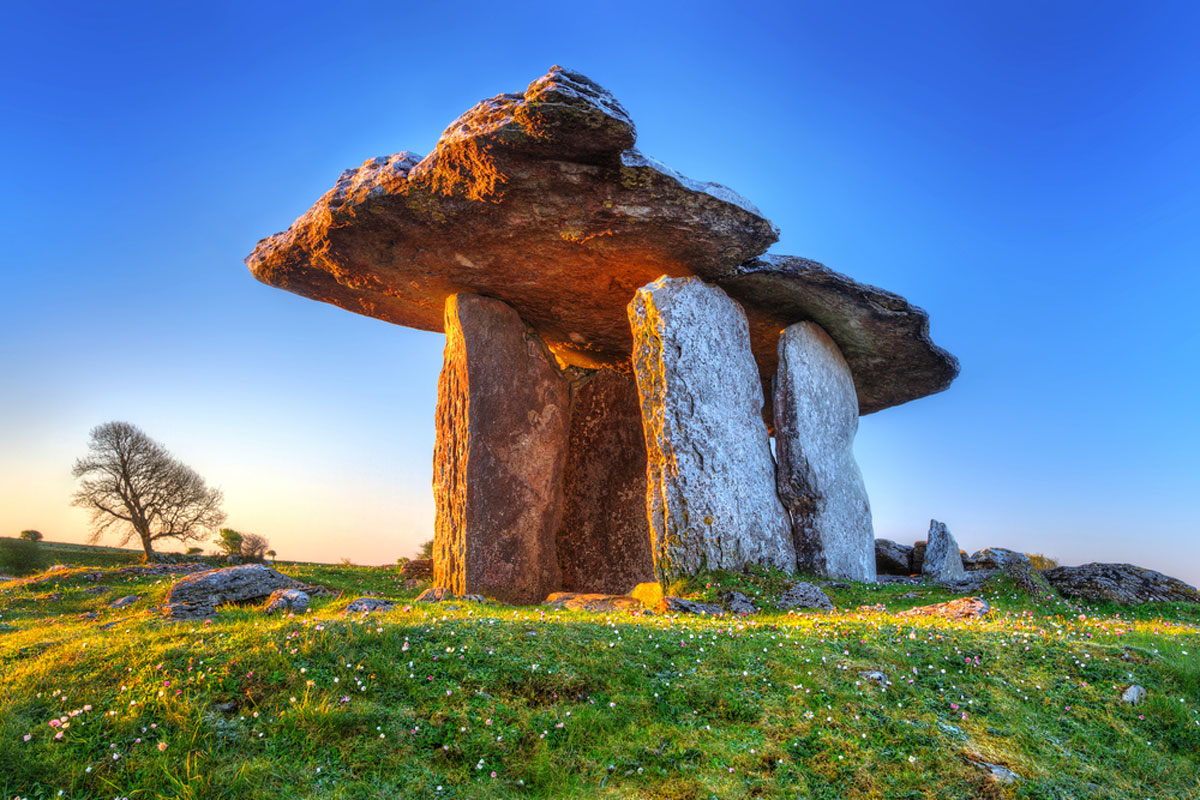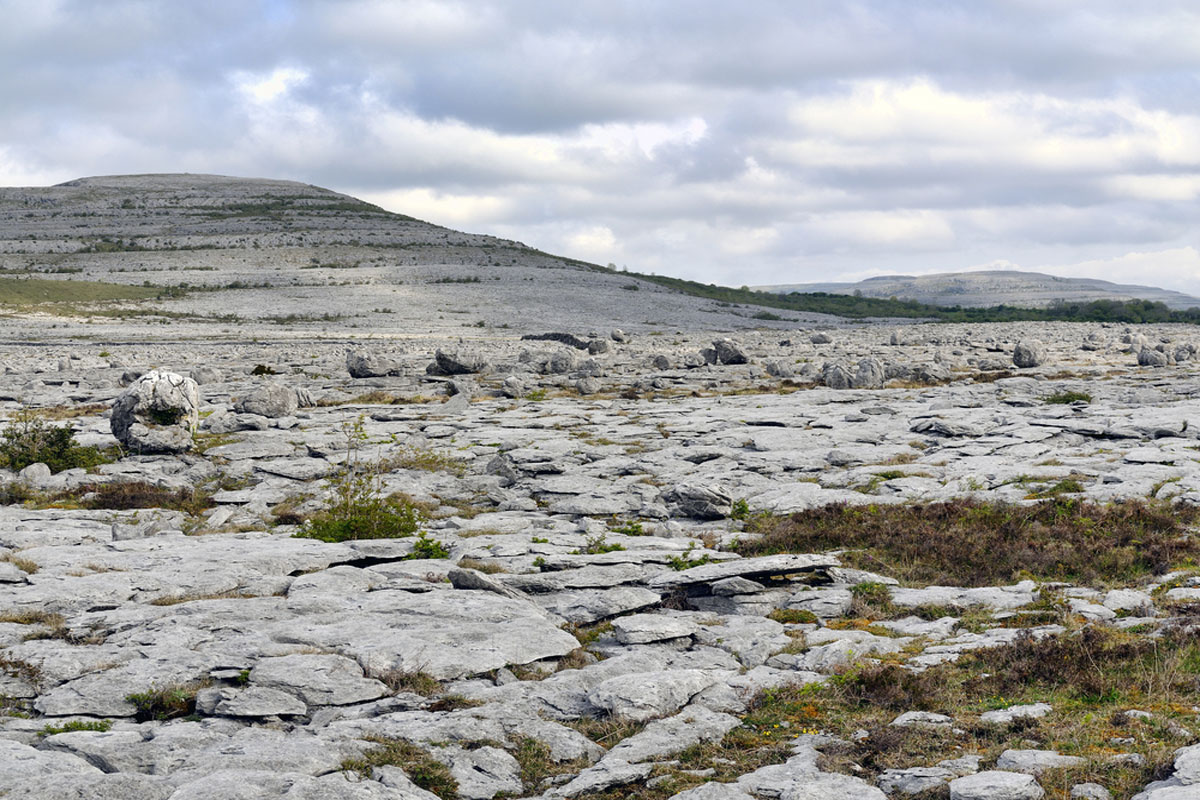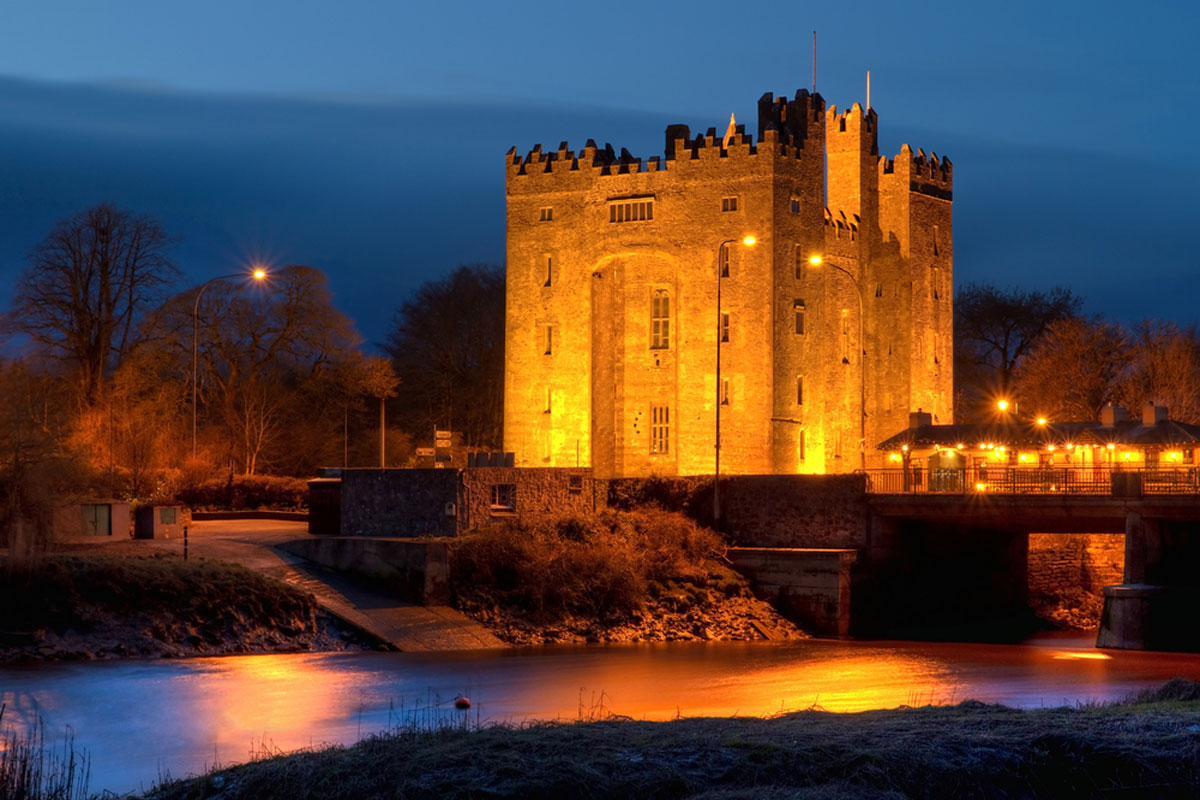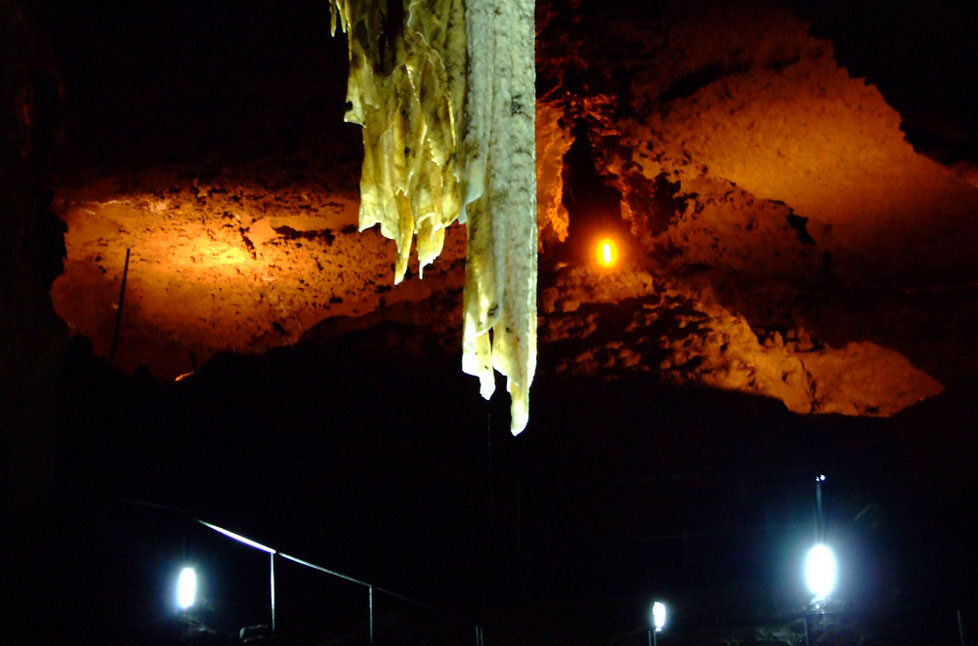The Geology and Formation of the Cliffs
The Cliffs of Moher, located on the western coast of Ireland in County Clare, are a testament to the island’s rich geological history and natural beauty. Stretching 14 kilometers (8.7 miles) along the Atlantic Ocean and reaching heights of up to 214 meters (702 feet), these dramatic cliffs are the result of millions of years of geological activity and erosion.
Geological History
The rock layers that form the Cliffs of Moher are estimated to be between 300 and 320 million years old, dating back to the Carboniferous period. During this era, Ireland lay near the equator and was partially submerged under a warm, shallow sea. As rivers carried sediment into this sea, sand and mud settled on the seabed, slowly accumulating in layers. Over millions of years, these layers compressed, forming the shale, sandstone, and siltstone that we see in the cliffs today.
Formation and Erosion
The towering cliffs we see now were shaped over millennia by powerful forces of erosion. As tectonic plates shifted and Ireland drifted northward, the land was slowly uplifted above sea level. The relentless pounding of Atlantic waves carved away at the base of the cliffs, causing parts of the rock to collapse and creating the steep, sheer faces that make the cliffs so breathtaking. Today, the constant action of waves, wind, and rain continues to shape the cliffs, wearing away the rock and creating fissures, sea caves, and sea stacks.
Rock Types and Layers
The cliffs are predominantly composed of Namurian shale and sandstone, which appear in distinct layers. The dark shale, rich in fossil remains, alternates with lighter sandstone layers. This layered effect gives the cliffs their unique horizontal lines, adding to the scenic beauty of the coastline. The differing hardness of shale and sandstone also contributes to the cliffs’ unique structure, as sandstone resists erosion longer than the softer shale.
The Geological Importance
The Cliffs of Moher are not only a natural wonder but also a significant geological landmark, revealing millions of years of Earth’s history. For geologists, these cliffs provide a valuable glimpse into the processes that formed the Atlantic margin, offering clues about ancient ecosystems, climate conditions, and tectonic activity. The cliffs’ dramatic appearance and fascinating geology have earned them a place in the UNESCO Global Geopark network, recognizing their importance as a site of natural and scientific interest.
The Rich Biodiversity of the Cliffs
Beyond their stunning landscape, the Cliffs of Moher are a sanctuary for diverse wildlife, with a thriving ecosystem that draws nature enthusiasts and scientists alike. Home to one of Ireland’s most significant seabird colonies and an array of unique plant life, these cliffs are a prime example of how rugged coastal environments can nurture vibrant biodiversity.
Seabirds: A Spectacular Colony
The Cliffs of Moher are internationally recognized as a vital seabird nesting ground, hosting up to 30,000 breeding pairs each year. Designated as a Special Protection Area (SPA), the cliffs provide ideal nesting ledges and abundant food supplies for various seabird species. Here are a few notable ones:
- Puffins: These charming birds with their colorful beaks and distinctive black-and-white plumage are a favorite sight at the cliffs, especially during their breeding season from May to July. Puffins nest in burrows along the cliffs’ grassy edges, where they raise their young before returning to the open sea.
- Guillemots: Recognizable by their sleek, black-and-white bodies and upright stance, guillemots prefer nesting on narrow cliff ledges. They lay their pear-shaped eggs directly on the rock, allowing them to fit securely on the precarious ledges.
- Razorbills: Often seen diving into the waters below to catch fish, razorbills also nest in high cliff crevices. Their contrasting black upper bodies and white underbellies make them stand out as they soar along the cliffs.
- Kittiwakes: These small, delicate-looking gulls with soft, gray wings and yellow bills create tightly packed colonies along the cliffs. Kittiwakes are known for their high-pitched calls that add to the symphony of sounds along the cliffside.
Land Animals and Marine Life
While seabirds are the main attraction, the cliffs also support a range of other wildlife. Gray seals can sometimes be seen basking on the rocks below or swimming along the shoreline, while bottlenose dolphins and even the occasional basking shark make appearances in the surrounding waters. This abundance of marine life adds another layer of biodiversity to the cliffs, contributing to the area’s ecological richness.
Flora: Resilient Plant Life
The windswept environment of the cliffs may seem inhospitable to plant life, but various hardy species have adapted to survive. Along the edges and in rocky crevices, you’ll find an array of coastal plants, including:
- Thrift: Known for its pink, globe-shaped flower clusters, thrift is a resilient plant that thrives in salt-laden air and rocky soil.
- Sea Campion: With delicate white blossoms and thick, waxy leaves, sea campion has adapted to the cliffs’ exposure to strong winds and salty sea spray.
- Rock Samphire: This aromatic plant, often used in traditional cooking, grows in cracks and crevices on the cliff face. Its small yellow flowers add a touch of color to the rugged rockscape.
These plants are not only beautiful but serve an essential ecological role. Their roots help prevent soil erosion, and they provide food and shelter for insects, which, in turn, support bird populations.
Conservation Efforts
Due to the cliffs’ ecological importance, conservation measures are in place to protect the diverse species that inhabit the area. The Cliffs of Moher are part of the Burren and Cliffs of Moher UNESCO Global Geopark, a designation that emphasizes the need to balance tourism with conservation. Restrictions on development, habitat protection, and careful monitoring of wildlife populations all contribute to preserving the cliffs’ natural beauty and biodiversity.
The History and Cultural Significance of the Cliffs
The Cliffs of Moher are not only a natural wonder but also a site deeply embedded in Ireland’s cultural and historical tapestry. Over the centuries, they have inspired myth, folklore, and art, serving as a powerful symbol of Ireland’s wild beauty and resilience.
Ancient Myths and Legends
In Irish mythology, the Cliffs of Moher have long been associated with mystery and magic. The name “Moher” is believed to come from the ancient Gaelic word mothar, meaning “ruin of a fort.” According to legend, the cliffs were once home to a fortress called Mothar that guarded the area before being destroyed during the Napoleonic Wars.
One of the most well-known legends tied to the cliffs is the story of the witch Mal, who fell in love with the Irish hero Cú Chulainn. After Cú Chulainn rejected her, Mal chased him across Ireland to the Cliffs of Moher, where she met a tragic end by falling into the sea. This tale has added a layer of mystique to the cliffs, and some say that the rocky sea stacks along the coast are remnants of Mal herself.
A Place of Strategic Importance
Throughout history, the cliffs have been used as a vantage point for defense and as a guide for navigators. In the early 19th century, a tower was built on Hag’s Head, the southernmost point of the cliffs, to protect against a possible invasion by Napoleon. Although the original fort is no longer standing, the defensive tower remains, a reminder of the cliffs’ strategic importance.
O’Brien’s Tower: A Tourist Landmark
In 1835, Cornelius O’Brien, a local landlord, built O’Brien’s Tower near the highest point of the cliffs. This round stone tower was intended as a viewing platform to attract tourists, who were already beginning to appreciate the dramatic beauty of the cliffs. O’Brien believed that tourism would benefit the local economy and invested in various facilities to encourage visitors, such as improved roads and facilities at the tower. Today, O’Brien’s Tower is an iconic part of the Cliffs of Moher experience, offering panoramic views of the cliffs, the Aran Islands, and Galway Bay.
The Cliffs in Art, Literature, and Popular Culture
The cliffs have inspired countless artists, writers, and musicians over the years, cementing their place in Irish culture and identity. The natural splendor of the cliffs has been captured in traditional Irish songs and literature, where they often symbolize strength, resilience, and a deep connection to nature. More recently, the cliffs have become a prominent feature in global popular culture, appearing in films like Harry Potter and the Half-Blood Prince and The Princess Bride. Their dramatic landscape has also been featured in music videos, television shows, and travel documentaries, making them an internationally recognized icon of Ireland.
The Cliffs as a Symbol of Ireland
For many, the Cliffs of Moher represent the rugged, untamed beauty of Ireland itself. They stand as a powerful reminder of the island’s ancient history, cultural heritage, and connection to the sea. Each year, millions of visitors are drawn to the cliffs, eager to experience their majesty and connect with the stories and legends that surround them. The cliffs’ enduring appeal reflects Ireland’s own resilience, evolving through history yet holding steadfast to its unique character and charm.
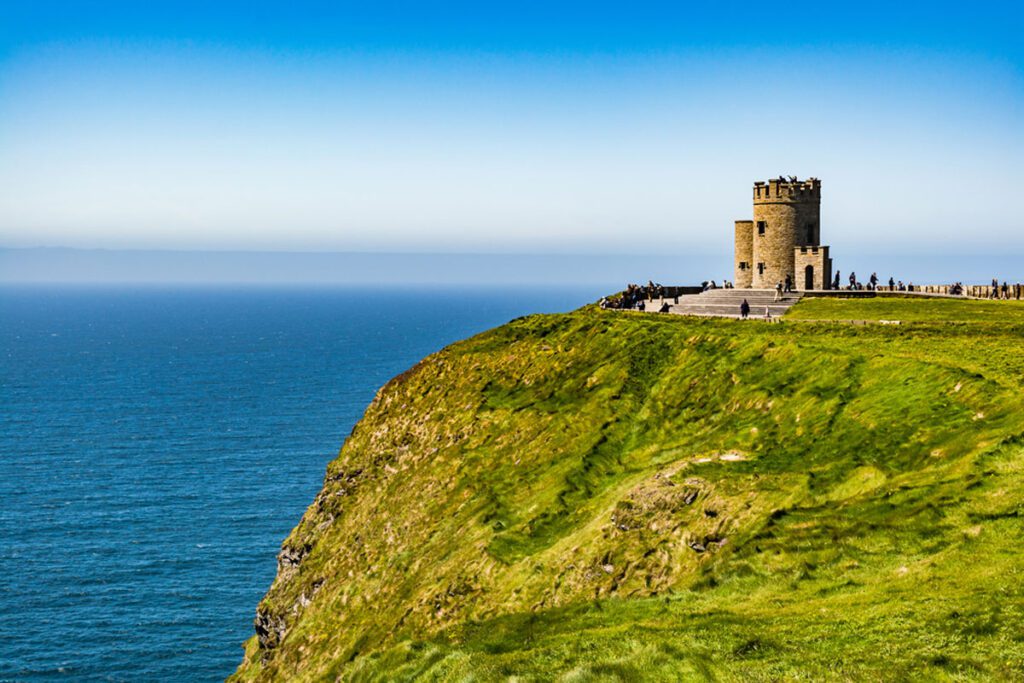
Visiting the Cliffs of Moher – A Traveler’s Guide
The Cliffs of Moher are one of Ireland’s most popular and unforgettable attractions, drawing over a million visitors each year to witness their breathtaking views and dramatic landscapes. Whether you’re a first-time visitor or a seasoned traveler, there are plenty of ways to explore the cliffs and make the most of your experience.
Getting There
The Cliffs of Moher are located on Ireland’s western coast in County Clare. They’re accessible by car, public transport, and guided tours:
- By Car: From Dublin, the cliffs are about a 3.5-hour drive west, while they’re around 1.5 hours from Galway. There is parking available at the Cliffs of Moher Visitor Centre, with parking fees included in the entry ticket.
- By Public Transport: Bus Éireann provides routes from nearby cities, with buses that connect the cliffs to Galway and Ennis. During peak season, shuttle buses run between Doolin, Liscannor, and the cliffs, offering an environmentally friendly option for travelers.
- Guided Tours: Many guided tours depart from Dublin, Galway, and other towns, offering a convenient way to visit the cliffs along with nearby attractions like the Burren, Doolin, and the Aran Islands.
Best Times to Visit
The cliffs are open year-round, but timing your visit can greatly impact your experience:
- Season: Summer (June to August) sees the highest number of visitors. For fewer crowds, consider visiting in the shoulder seasons of spring (April to May) or autumn (September to October), when the weather is still mild, and the cliffs are quieter.
- Time of Day: Early morning and late afternoon offer beautiful lighting for photography and fewer crowds. Sunset visits provide stunning colors as the sun dips below the Atlantic, creating a golden glow over the cliffs.
- Weather Considerations: The weather along Ireland’s west coast can be unpredictable, with fog, wind, and rain common. Check the forecast, dress in layers, and be prepared for quick changes. Clear days offer the best visibility, but even misty conditions can add a mystical atmosphere to the cliffs.
Exploring the Cliffs
The cliffs have several scenic spots and trails to explore, catering to different interests and fitness levels:
- Cliffs of Moher Visitor Centre: The Visitor Centre offers an informative introduction to the area, featuring exhibitions on geology, wildlife, and local folklore. The centre also has a café, restrooms, and a gift shop.
- O’Brien’s Tower: For a panoramic view of the coastline, climb to the top of O’Brien’s Tower, which provides a stunning vantage point. This 19th-century structure, built by Cornelius O’Brien, offers a higher perspective, letting you appreciate the cliffs from above.
- Cliff Walks: The main paved pathways are suitable for all fitness levels and provide spectacular viewpoints. For those looking for a more rugged adventure, the 20-kilometer (12.5-mile) Cliff Walk stretches between Doolin and Liscannor. This trail offers a close-up experience of the cliffs and is suitable for experienced hikers who can handle its exposed, uneven terrain.
- Photography and Birdwatching: For photography enthusiasts, there are endless opportunities to capture the cliffs’ dramatic beauty. The cliffs are also a birdwatcher’s paradise, especially during nesting season (April to July) when thousands of seabirds, including puffins and guillemots, gather along the cliffs.
Tips for a Safe and Respectful Visit
- Stay on Marked Paths: The cliffs are prone to erosion, and getting too close to the edge can be dangerous. Stay within designated areas for safety and to protect the landscape.
- Weather Preparedness: Ireland’s weather can be unpredictable, especially along the coast. Dress in layers, wear sturdy shoes, and bring rain gear, even if it seems sunny.
- Leave No Trace: As one of Ireland’s natural wonders, the cliffs deserve respect and care. Avoid littering and be mindful of the local environment.
Nearby Attractions
Extend your visit to the Cliffs of Moher by exploring nearby sights and experiences:
- The Burren: Just a short drive away, the Burren is a unique limestone landscape filled with rare flora, ancient tombs, and cave systems, offering a stark contrast to the cliffs’ rugged beauty.
- Doolin: Known as the gateway to the cliffs, the charming village of Doolin is famous for its traditional Irish music scene. Stop by one of its cozy pubs for live music and local fare.
- Aran Islands: A ferry from Doolin can take you to the Aran Islands, where you’ll find windswept landscapes, ancient forts, and a rich Gaelic heritage. The islands offer a quieter, off-the-beaten-path experience and stunning coastal views.
Conservation and Sustainability – Preserving the Cliffs for Future Generations
As one of Ireland’s most-visited natural attractions, the Cliffs of Moher face unique environmental challenges. High tourist traffic, natural erosion, and the need for habitat preservation all place pressure on this iconic site.
The Environmental Impact of Tourism
The Cliffs of Moher welcome over a million visitors each year, contributing to the local economy but also affecting the environment. Some of the main issues caused by heavy tourism include:
- Erosion and Path Degradation: The cliffs’ fragile ecosystems, particularly along trails, are vulnerable to erosion. The pressure of foot traffic compacts soil, destroys vegetation, and accelerates erosion along cliff edges and paths.
- Wildlife Disturbance: Large numbers of visitors can disrupt the natural behavior of the seabirds, such as puffins and guillemots, that nest along the cliffs. Noise and human proximity can stress the birds, affecting their nesting and feeding habits.
- Waste and Pollution: While the Cliffs of Moher Visitor Centre has facilities to manage waste, littering can still occur, posing a threat to local wildlife and detracting from the natural beauty of the area.
Conservation Efforts at the Cliffs of Moher
To protect the cliffs while allowing visitors to enjoy them, various conservation and sustainability measures are in place:
- Sustainable Visitor Centre: The Cliffs of Moher Visitor Centre was built with sustainability in mind. Partially buried in the hillside to reduce its environmental footprint, the centre uses renewable energy sources, including solar panels and rainwater harvesting, to minimize its impact.
- Designated Walkways and Viewing Points: To manage erosion and protect the cliffside ecosystem, designated paths and viewing areas are provided. These pathways help keep foot traffic off vulnerable areas, allowing plants and soil to recover.
- Wildlife Protection Programs: The cliffs are part of the Burren and Cliffs of Moher UNESCO Global Geopark, which emphasizes protecting the seabird colonies and marine life along the cliffs. Conservationists work with local authorities to monitor bird populations, regulate access to nesting sites, and ensure habitats remain undisturbed during breeding seasons.
- Educational Outreach: The visitor centre provides information on responsible tourism practices and the ecological importance of the cliffs, encouraging visitors to respect and protect the area. Interactive exhibits highlight the cliffs’ natural history and the importance of conservation, fostering a greater understanding of the need for preservation.
How You Can Help as a Visitor
Every visitor can play a role in preserving the Cliffs of Moher. Here are some simple yet effective ways to ensure your visit is eco-friendly:
- Stay on Marked Trails: Sticking to designated paths helps protect sensitive areas from erosion and minimizes the impact on local vegetation and wildlife.
- Respect Wildlife: Maintain a respectful distance from birds and other wildlife to avoid causing stress. Use binoculars for closer views rather than approaching nesting sites.
- Dispose of Waste Properly: Use the bins provided at the visitor centre, and consider taking any waste with you to avoid overflowing bins.
- Support Sustainable Tourism: Choose eco-friendly tour operators and locally owned accommodations to help reduce the carbon footprint associated with your visit.
- Learn and Share: By learning about the cliffs’ natural history and conservation efforts, you can help raise awareness about the importance of preserving such iconic sites for future generations.
A Legacy for Future Generations
The Cliffs of Moher are not only a symbol of Ireland’s beauty but also a reminder of our shared responsibility to protect natural wonders. With continued conservation efforts and mindful tourism, we can ensure that these cliffs remain a source of inspiration, joy, and awe for generations to come. The work done here serves as a model for balancing environmental preservation with the desire to experience nature’s most extraordinary places.
Natural Wonders
- The Giant’s Causeway – A UNESCO World Heritage Site featuring unique hexagonal basalt columns.
- Carrick-a-Rede Rope Bridge – A thrilling rope bridge linking the mainland to a small island.
- Cushendun Caves – Stunning caves featured in Game of Thrones.
- Glens of Antrim – A series of nine beautiful glens offering breathtaking scenery and walking trails.
- Fair Head – A dramatic cliff with incredible views, popular for hiking and rock climbing.
Castles and Historic Sites
- Dunluce Castle – A medieval castle perched on a dramatic cliff overlooking the sea.
- Carrickfergus Castle – A well-preserved Norman castle dating back to the 12th century.
- Shane’s Castle – A historic estate with a ruined castle and stunning grounds.
Coastal Attractions
- The Dark Hedges – A hauntingly beautiful avenue of beech trees featured in Game of Thrones.
- Ballycastle Beach – A scenic spot for relaxation and views of Rathlin Island.
- White Park Bay – A picturesque beach with stunning coastal views.
Islands and Marine Attractions
- Rathlin Island – Known for its wildlife, seabird colonies, and the Rathlin West Light Seabird Centre.
- Ballintoy Harbour – A charming harbor and filming location for Game of Thrones.
Museums and Cultural Sites
- Ulster Folk and Transport Museum – Showcasing traditional Irish heritage and transportation history.
- Belfast Lough – Known for maritime heritage, including the Titanic Quarter.
Scenic Drives and Routes
- Causeway Coastal Route – A stunning drive featuring some of Northern Ireland’s most iconic attractions.
- Slemish Mountain – Said to be the first home of Saint Patrick in Ireland, popular for hiking.
Unique Experiences
- Old Bushmills Distillery – One of the oldest whiskey distilleries in the world, offering tours and tastings.
- Glenarm Castle and Gardens – A stunning estate with historic gardens and seasonal events.
These attractions make County Antrim a must-visit destination for nature lovers, history buffs, and adventure seekers alike.
Helpful Resources




